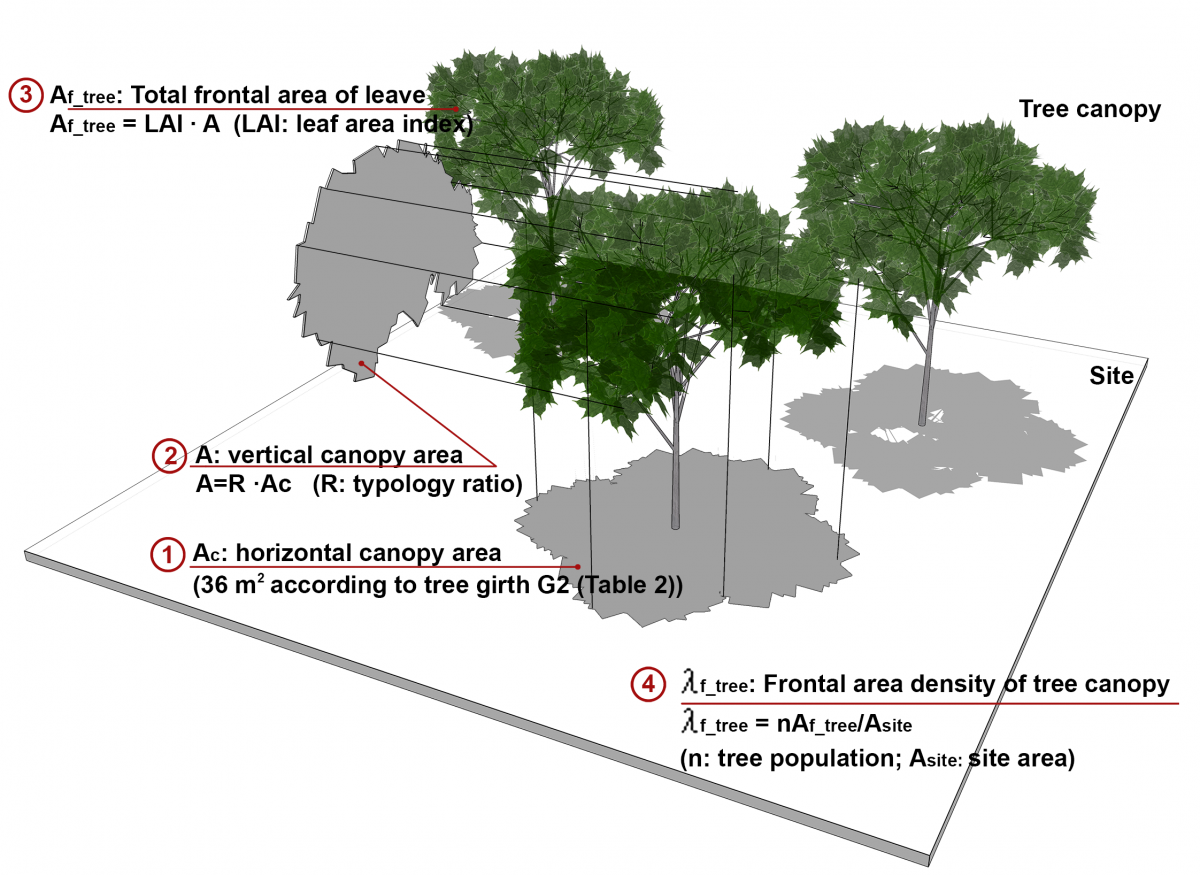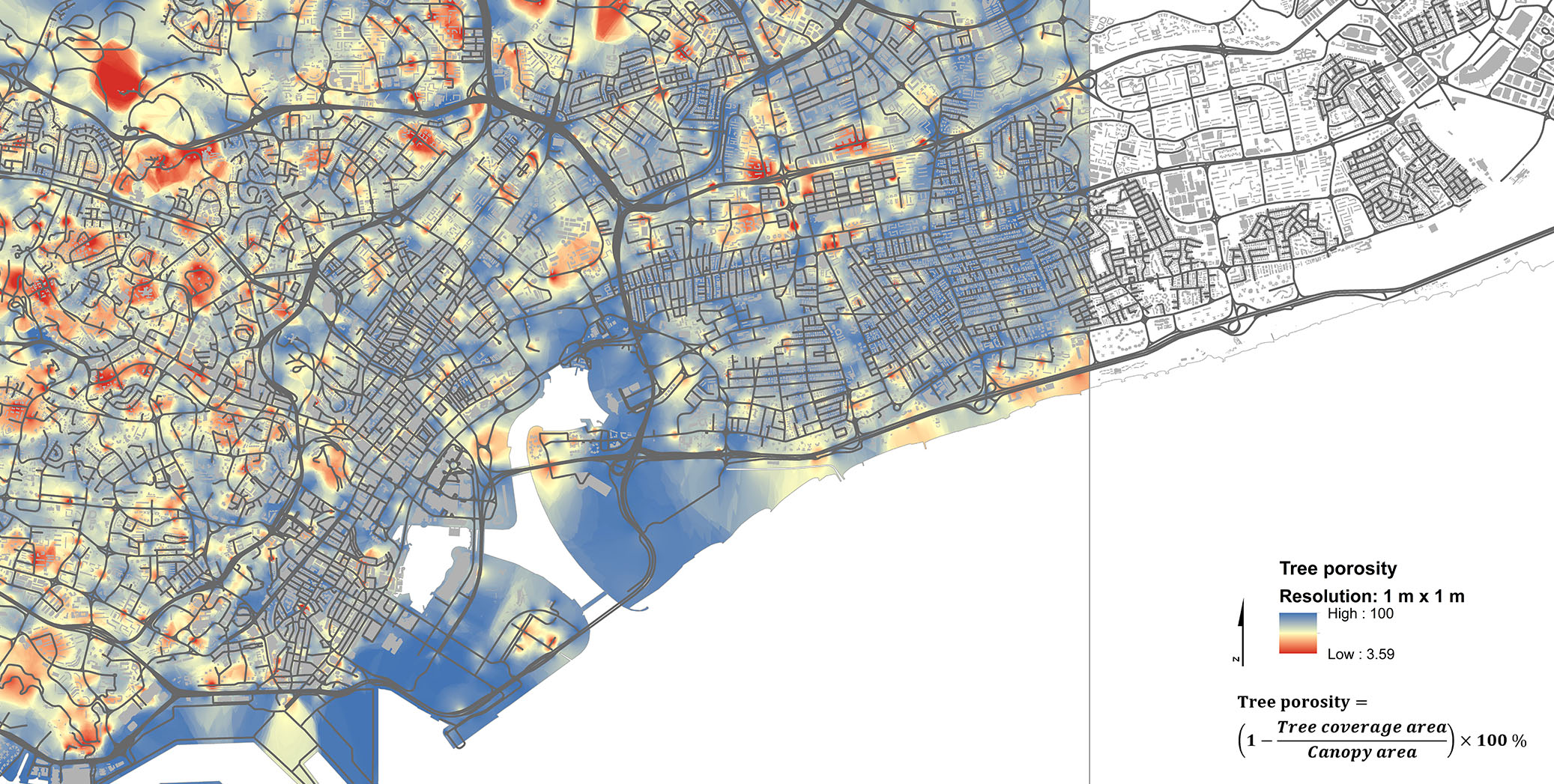Natural Ventilation
Trees’ Effect on Wind Environment (Urban Scale)

GIS model to estimate effect of trees on natural ventilation
High-density urban areas are often associated with limited outdoor natural ventilation. Given the growing call for more vegetation in cities, it is important to study the wind resistant of urban trees in order to address outdoor natural ventilation problems in landscape planning.
In this study, we developed a practical semi-empirical model to provide scientific understandings for the landscape planning practice. The new model was developed based on the balance between momentum flux and the drag force of both buildings and trees on air flow. Effects of urban context density and trees (i.e. plant canopy density and typology) on wind environment were clarified.
This research correlated the urban density and tree geometry indices with wind speed, thereby enabling planners to calculate trees’ effects on airflow using their in-house data. With such new practical tools and understandings, the knowledge-based landscape planning can be conducted to introduce more trees into urban areas, while avoiding the negative effects of trees on the outdoor wind environment in cities at the same time.

Figure. Tree porosity calculated from street views.
Outputs:
- We create a practical GIS model to estimate trees’ effect on urban wind environment;
- The model is derived from the understandings of momentum flux and drag force;
- Friction velocity, representing momentum flux, is modelled and validated;
- Effects of urban density on the impact of urban trees on air flow are investigated;
- Effect of plant canopy density/typology on air flow is investigated.
Publication:
- Yuan C*, Norford LK, Ng E, 2017, A Semi-Empirical Model for the Effect of Trees on the Urban Wind Environment, Landscape and Urban Planning, 168, pp 84-93.

Figure. Quantitative analysis on impact of various tree species on the wind environment.

Figure. Landscape design strategies.